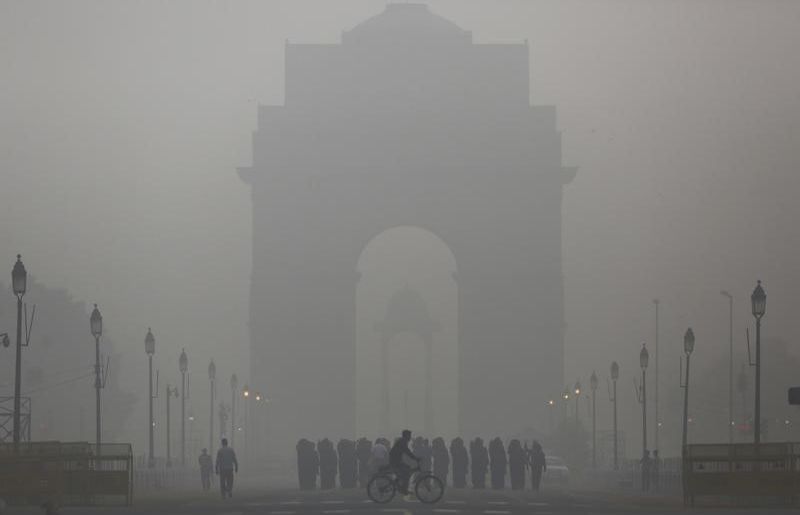Breathing dirtiest air: India scores highest in deaths due to air pollution

The level of air pollution in India is not just a particulate matter 2.5 figure anymore. It has become a problem that is claiming lives. And this number is humongous – to put this to perspective, deaths due to air pollution in the country are just a fraction less than deaths due to use of tobacco.
According to recent report, compiled collectively by Health Effects Institute in Boston, Massachusetts, and the Institute of Health Metrics and Evaluation in Seattle, Washington; globally, the number of deaths due to PM 2.5 have risen from 3.5 million in 1990 to 4.2 million in 2015.
What is alarming – the report suggests, over 2.2 million deaths of 4.2 million have occurred only in India and China – both recording 1.1 million deaths each.

Air pollution in India has become a national health crisis, the situation is such that India could soon overtake its neighbour in number of premature deaths due to outdoor air pollution in the coming years.
We have all read and heard about worsening air pollution problem in Delhi and near capital region, especially in days after Diwali, when smog engulfed the entire region for weeks with particulate matter 2.5 levels rising to levels never recorded before in the world.
Sadly, Delhi NCR is not the only area reeling under deepening air pollution problem in India. The entire North India, right from Rajasthan across the Indo-Gangetic plain to West Bengal, the situation is only bad to worse.
No city/State has bothered to keep air pollution under check, or even have a realistic plans in place to address the issue. Authorities in India are good with laying a deaf ear to the repeated scientific reports, which show India as the country reeling under biggest air pollution threat that no other country has seen. Unfortunately, there are people in the government who still deny the poor air condition, and the government only monitors a handful of cities for their air quality levels.
Unless the government of India acknowledges air pollution as an epidemic, and puts robust monitoring system in place urgently, deteriorating air quality will become the biggest killer in the country, and moving out of homes in most cities will be like purposely stepping into a gas chamber.
Even though China has most number of deaths reported due to air pollution, the air pollution levels in the country are almost stabilized in the last few years, since the country has taken active steps to counter the problem. China has improved public transportation, pulled of high-emission vehicles from the road, major polluting industries have either been suspended or asked to reduce production, and construction sites that generate dust have been shut down temporarily.
According to report from Greenpeace India, collected through RTIs and years of air-pollution data, fossil fuel and vehicular emission are the main contributors to the dangerous rise in levels of air pollution in India.
This is not it – India also has the highest number of ozone-related Chronic Obstructive Pulmonary Disease deaths every year.
The recent air quality report point at 60 percent global increase in deaths due to ozone layer depletion. This data again is calculated between year 1990 and 2015.
Again, the alarming fact here is – 67 percent of this total increase in ozone-attributed deaths have occurred in India. Between 1990 and 2015, there has been a 150 percent increase in annual deaths due to COPD in India, ozone exposure considered the only reason. 2.54 lakh people died because of ozone pollution in 2015 alone.

Main diseases triggered by ozone depletion that lead to death include, Chronic Obstructive Pulmonary Disease (COPD), Bronchitis and Emphysema.
India cannot be complacent or stay in the denial mode on issues of outdoor air pollution and ozone pollution anymore. As we have learnt, air pollution is not limited to Delhi alone, pan India air pollution norms are need to be initiated before it’s too late.
Source: QuartzIndia


